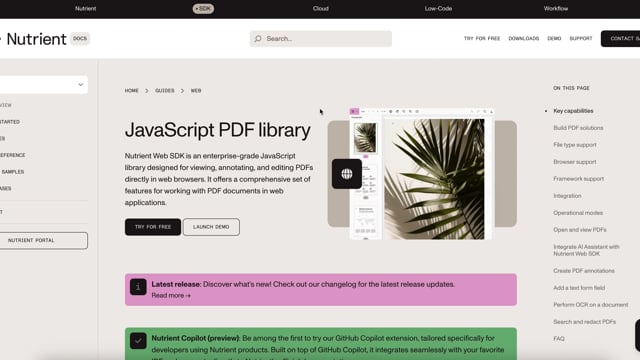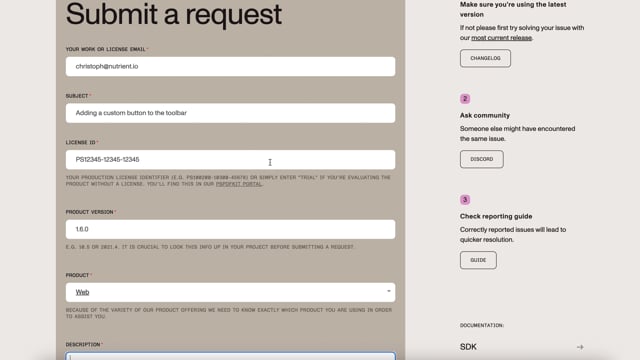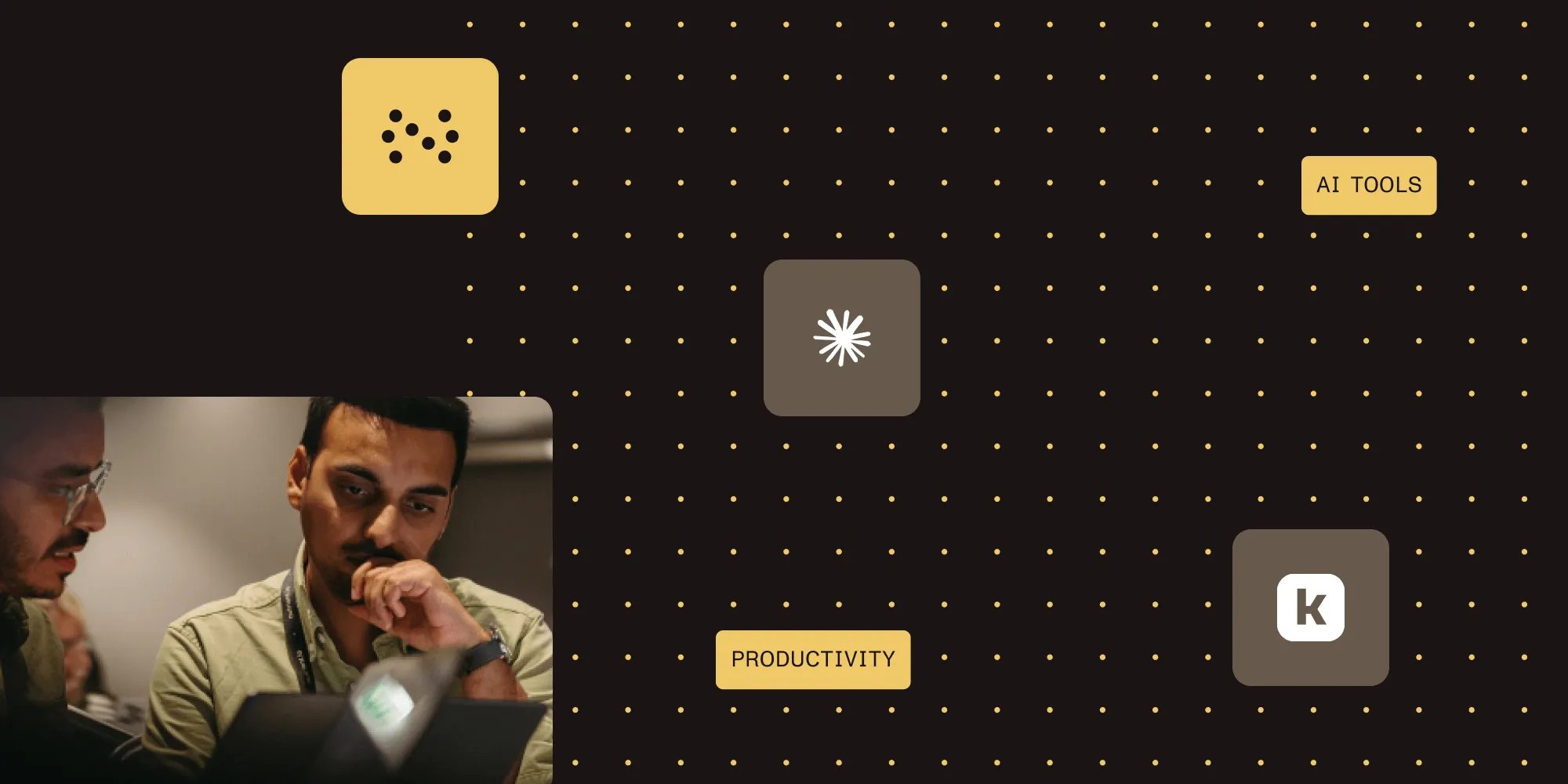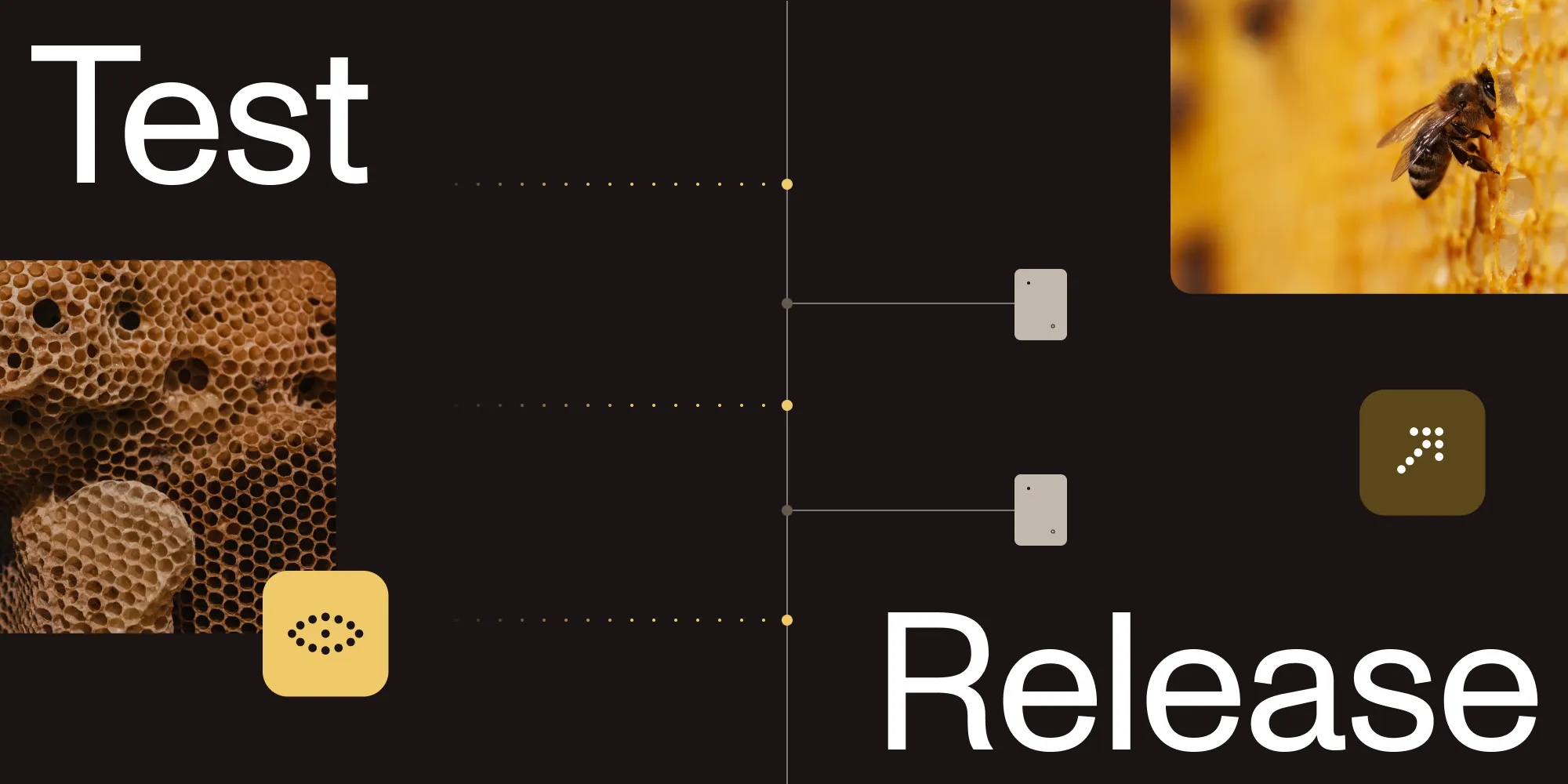How AI is transforming the customer experience at Nutrient: From instant answers to intelligent support
Table of contents

We’ve all encountered chatbots in our day-to-day lives when looking up documentation or contacting customer support for tools we want to use, and most of the time, it’s not a great experience. But at Nutrient, we believe that great technology should make complex tasks simple, and that philosophy extends beyond our core products to how we support our customers. Over the past year, we’ve integrated AI-powered solutions into our customer-facing operations, fundamentally transforming how our users find answers and get help.
This post will cover how Nutrient leverages AI to deliver better, faster, and smarter customer support that keeps developers building instead of searching.
The challenge: Information overload in a complex product ecosystem
As our product suite has grown over the past years, so too has our documentation: We maintain extensive resources across multiple information sources, integration guides, troubleshooting documentation, and product-specific tutorials.
However, while comprehensive documentation is essential, it can lead to a problem: The more complete your documentation is, the harder it becomes for users to find exactly what they need. Our customers were spending valuable time navigating through documentation, and our Support team was fielding tickets that could often be resolved through existing resources, if only information could be found efficiently.
The technology behind the magic: Kapa AI
Our AI implementation is powered by Kapa AI(opens in a new tab), a platform specifically designed for technical documentation and customer support use cases. What makes Kapa particularly valuable for us is its ability to:
- Ingest multiple information sources — You can feed Kapa AI specific information sources, which, in our case, mainly consists of our guides and API documentation, public examples(opens in a new tab), and internal documentation.
- Maintain context accuracy — Unlike general-purpose AI, Kapa is trained specifically on our documentation, ensuring responses are accurate and up to date.
- Understand technical nuance — The system grasps the technical context of customer queries, distinguishing between different products, versions, and implementation scenarios.
Diversifying our implementation strategy
When implementing AI tooling into your product ecosystem, it’s important to target the areas where it’ll see the most impact and usage. Since our usage with the tool focuses on the customer-facing side, we’ve identified a few key customer touchpoints.
Intelligent documentation navigation
Our customer guides now feature AI-powered assistance that goes beyond traditional search functionality. Instead of requiring users to know exactly what to search for, our AI system:
- Understands intent — Customers can describe their goals, challenges, and questions in natural language.
- Provides contextual links — The AI analyzes the request and surfaces the most relevant guide pages.
- Generates smart summaries — Rather than overwhelming users with multiple lengthy articles, it creates concise summaries that highlight the key information needed.
This means a developer looking to “add a custom button to the toolbar in my JavaScript app” gets direct links to our Web SDK documentation, relevant code examples, and a summary of the key implementation steps — all without having to navigate through our entire documentation hierarchy.
The video below shows this in action!

Proactive support ticket resolution
Perhaps our most impactful implementation is in our support flow. Some say that the best support is the one where you don’t even need to contact the support team and wait for a response, but instead get a resolution to your question right away with zero wait time. When customers submit support tickets, our AI system now acts as a first line of intelligent assistance, which follows this process:
- A customer fills out our support form with their issue description, product details, version information, and other context.
- Before the ticket reaches our human support team, our AI system analyzes all the provided information.
- The AI searches through our comprehensive knowledge base — including internal documentation, customer-facing guides, and API references.
- If a solution is found, the customer receives an immediate response with relevant documentation and step-by-step guidance.
- If the solution isn’t satisfactory, a single click on the Submit button will send the ticket as-is to our Support team.
In contrast to wasting minutes typing long messages to a chatbot that oftentimes has limited knowledge before getting the option to even contact a real person, our approach requires only one extra button click, which could save you hours, while still ensuring you get accurate, documentation-backed solutions.

AI agents assisting agents
The eternal struggle of having internal documentation so vast that it could rival the knowledge of the library of Alexandria is the same as with external documentation. If there’s too much of it, it’s hard to find what you’re looking for. With the more than 100,000 support tickets we’ve received over the past years, it’s nearly impossible to find relevant tickets by utilizing conventional search engines. Instead, why not let AI take over this tiresome job? This allows us to:
- Easily find relevant historical tickets when dealing with similar requests.
- Leverage insights from past resolutions to provide more comprehensive solutions.
- Connect support tickets easily to existing internal bug tickets or feature requests, reducing duplicated work.
- Utilize internal information sources and documentation to more quickly provide accurate, documentation-based responses.
The impact
While there’s always a healthy amount of skepticism in connection with AI tools in customer-facing areas, the results speak for themselves. Around 15 percent of tickets that would typically go directly to a support engineer are now resolved immediately via the impact of AI in our support ticket form, purely as self-service for the customer. While we pride ourselves on good reply times, a 30-second reply time is pretty hard to beat.
Furthermore, the 15 percent is measured across all tickets, so purely looking at ticket categories the AI can realistically handle (it can’t fix bugs or implement features... yet), this number is much higher in that context.
Beyond the self-service part of it also lies the advantage of getting assistance regarding the context of tickets and connectivity to internal tickets. This avoids duplicating work and results in a faster turnaround time and an overall better experience for our customers and the Support team.
Conclusion
AI isn’t just changing how we build products; it’s transforming how we support the people who use them. At Nutrient, our AI-powered customer experience initiatives have created a win-win scenario: Customers get faster, more accurate assistance, while our team can focus on delivering exceptional support for complex challenges.
The future of customer support isn’t about replacing human expertise with artificial intelligence. Rather, it’s about using AI to amplify human capabilities and create experiences that are both efficient and actually helpful.
As we continue to evolve our AI implementations, one thing remains constant: our commitment to making powerful technology accessible and ensuring our customers can achieve their goals with minimal friction.







